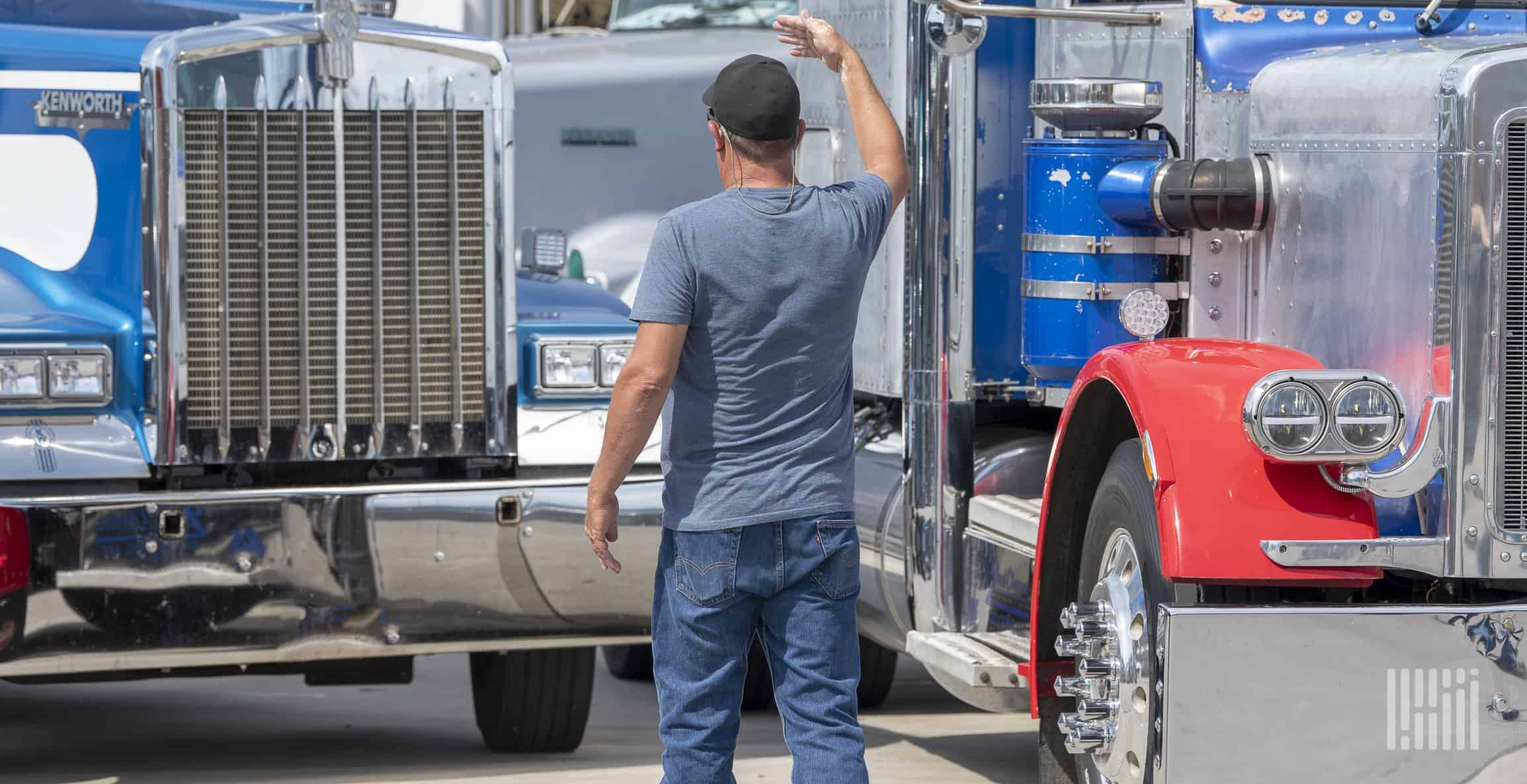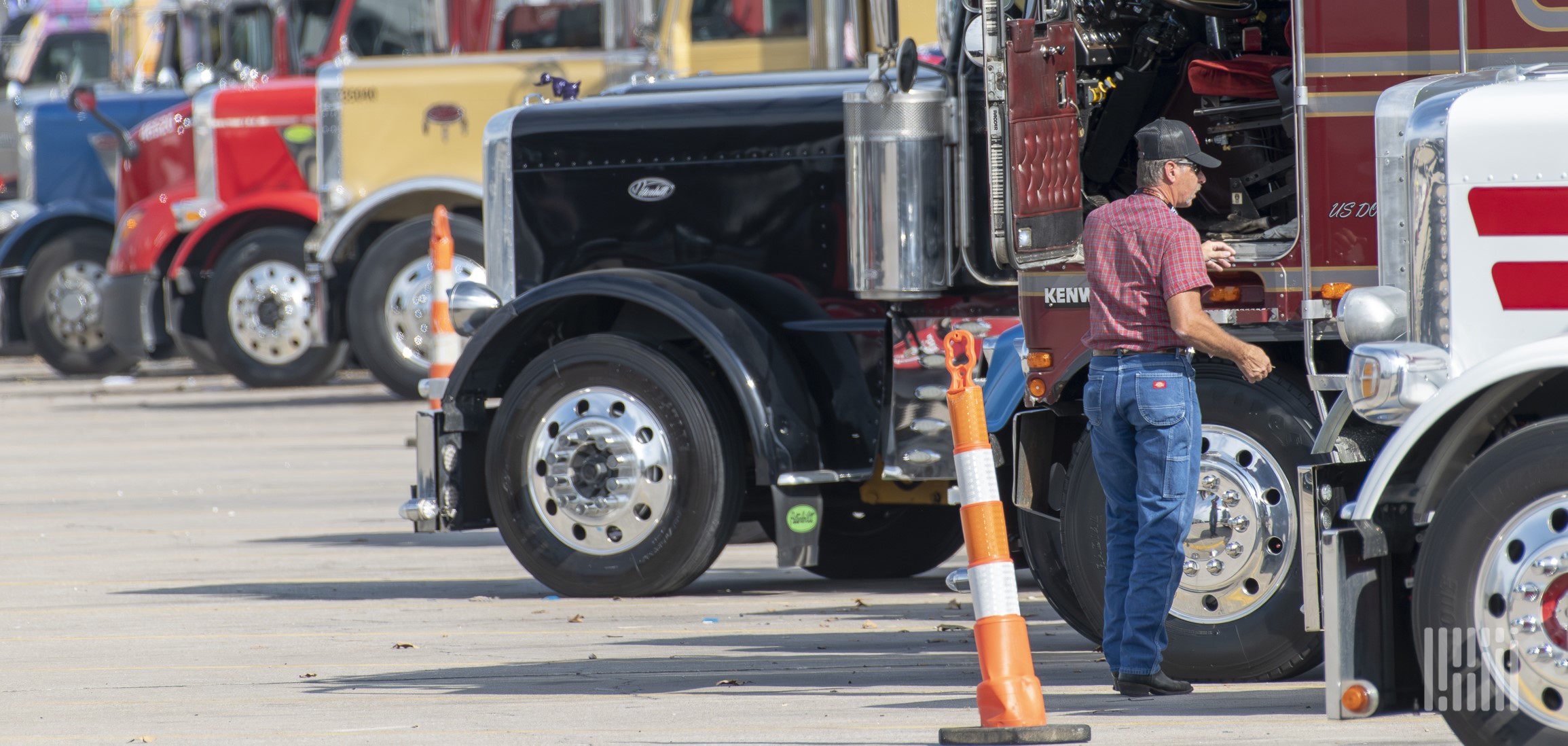When do you need a CDL? What is the difference between Class A, Class B and Class C commercial driver’s licenses? Exactly what is an endorsement, and why do you need one?
If you have found yourself asking these questions, then this guide is for you. The FreightWaves Ratings team regularly takes a deep dive into trucking-industry questions like “What is FTL Shipping?”
FreightWaves is doing it again with this beginner’s guide to commercial driver’s licenses. Whether you have an interest in taking a CDL course or you are simply curious about the commercial trucking industry in general, this guide contains all of the information you need and then some.
What Is a CDL?
A commercial driver’s license, or CDL, is a special type of license that authorizes you to operate certain classes of commercial motor vehicles. With a regular license, once you obtained it, you had to complete a written knowledge test and a practical exam to demonstrate that you know how to safely operate a motor vehicle.
That’s what a CDL is, though it’s for larger and more complex vehicles, not everyday modes of transportation. While some of the same basic skills translate to commercial vehicles, these machines are larger, heavier and more powerful than standard passenger cars.
That is why the Federal Motor Carrier Safety Administration requires drivers to complete CDL training and obtain special forms of licensing before getting behind the wheel of these massive vehicles.
Drivers Who Must Obtain a CDL
You will need to complete CDL training and obtain a commercial license before you operate a vehicle that falls into any of these categories:
- Can transport more than 15 passengers
- Has a GVWR of 26,001 pounds or more
- Will be used to pull a multi-axle trailer
- Used to haul hazardous materials
Understanding the Ins and Outs of Commercial Driver Licenses
Let’s take a closer look at the various licenses and endorsement types that drivers may need. From there, you can decide which CDL training course best aligns with your goals.
Types of CDLs
There are three types of CDLs, including Class A, Class B and Class C.
Class A
Class A CDLs are the highest level of commercial driver’s licenses available. If you obtain a Class A CDL, then you can operate any type of vehicle that Class C or Class B CDL holders can operate in addition to even larger vehicles.
Licensed Class A CDL drivers can operate vehicles with a GVWR of 26,001 pounds or more. They can also haul a multi-axle trailer with a GVWR of more than 10,000 pounds.
Class B
Class B CDL holders can also operate vehicles with a GVWR of 26,001 pounds or more. However, they cannot haul trailers with a GVWR of more than 10,000 pounds. In most cases, Class B CDL drivers typically operate box trucks, which are also known as straight trucks.
Class C
Class C CDL holders cannot operate vehicles with GVWRs over 26,000 pounds. However, they can operate vehicles designed to transport 16 passengers or more, such as school buses or tour buses.
In addition to the above CDL license types, in many states, aspiring drivers can also obtain a commercial learner’s permit. These permits authorize drivers to operate commercial vehicles as long as a certified CDL holder is present with them in the passenger compartment.
Required CDL Testing
The specific scope of each CDL test will vary depending on which class of license you are applying for, though each testing process has been outlined below for your convenience.
Class A
After completing the appropriate CDL training course, you will need to pass a road skills test in a Class A vehicle, an air brakes knowledge test, a combinations knowledge test and a general knowledge test.
Class B
If you are applying for the Class B license, you will only have to complete the general CDL knowledge test and the air brakes knowledge test. You will also have to pass a road skills test in a Class B vehicle.
Class C
During testing for the Class C CDL, you will be required to obtain a passing score on the general knowledge exam. You will also have to complete specific requirements based on which type of endorsements you want to obtain. The two types of endorsements are passenger and hazmat.
Due to the rigorous testing requirements, it is vital that you enroll in a quality training program. These types of programs will provide you with the knowledge necessary to successfully pass the various CDL examinations.
CDL Endorsements
Endorsements are certifications that allow you to haul certain materials or operate specialized types of commercial vehicles. You can obtain as many endorsements as you would like, provided you complete the specified training and tests.
Here are some of the most common CDL endorsements:
T – Double or Triple Trailers
This endorsement allows you to haul double or triple trailers instead of just a single trailer. You can obtain this endorsement by passing a written knowledge test.
P – Passenger
A passenger endorsement will authorize you to transport 16 or more passengers. This endorsement will also require you to complete a practical skills test and a knowledge exam.
N – Tank Vehicle
After completing the tank vehicle knowledge test, you will be authorized to transport liquids in tanker trailers or permanently-attached tanks.
H – Hazardous Materials
A hazmat endorsement allows you to transport materials that are hazardous, such as fuel or chemicals. Obtaining this endorsement will require you to pass a written knowledge test.
X – Combination of Tank Vehicle and Hazardous Materials Endorsements
An X endorsement allows you to haul hazardous materials in a tank vehicle or a trailer. Many drivers obtain this endorsement instead of the H or N endorsement because most hazmat freight is transported in tanks. Obtaining this endorsement requires you to complete a written knowledge test.
S – School Bus
If you want to operate a school bus, you must obtain an S endorsement. This endorsement authorizes you to operate school buses that transport 16 people or more.
CDL Restrictions
While endorsements allow you to perform additional activities with your CDL, restrictions limit when and how you can use your commercial driver’s license.
A few restrictions that you may encounter are as follows:
- B — Corrective lenses are required
- D — Mechanical aid is required
- E — Automatic transmission only
- G — Can only drive during daylight hours
- L — Can only operate vehicles without air brakes
Vehicle Weight Ratings
When navigating the licensing process, you will encounter two types of weight ratings, which are as follows:
- Gross Vehicle Weight Rating (GVWR): GVWR is the maximum weight of the vehicle, including fuel, cargo and passengers.
- Gross Combined Weight Rating (GCWR): GCWR is the maximum combined weight of the trailer, freight and vehicle.
Specific GVWR and GCWR ratings will vary depending on the vehicle and the trailer. It is vital that you comply with these ratings, seeing as failing to do so could create safety hazards or run the risk of resulting in hefty fines.
When operating a commercial motor vehicle on a highway, you will periodically be required to stop at a weigh station. These stations are used to verify whether you are in compliance with relevant GVWR and GCWR ratings.
Who Is Exempt from Obtaining a CDL?
There are times when you may be exempt from obtaining a CDL:
- Operating farm equipment
- Driving a vehicle with a capacity of fewer than 16 people
- Operating a truck under 26,000 pounds
These are only a few examples of exemptions. You should check your state’s specific regulations to determine whether additional exemptions exist.
When Do You Need a CDL? Final Thoughts and Considerations
As you can see, there are plenty of paths that you can take if you would like to obtain a CDL. Ultimately, you should choose the path that best aligns with your career goals and aspirations.
When you are unsure about which types of freight you would like to haul, obtaining a Class A CDL may be the most practical approach to take, seeing as this license will open up plenty of doors that could lead you to high-paying career opportunities.
If you enjoyed this guide to “When do you need a CDL?” check out additional content from the FreightWaves Ratings team. You’ll find content that reviews products, provides insights into the trucking industry and covers emerging news in the supply chain sector.
FAQ
Not necessarily. When answering the question, “When do you need a CDL?” you should consider factors such as the GVWR and the number of passengers the vehicle can transport.
A commercial driver’s license is a license that authorizes you to operate a commercial vehicle. There are several different types of licenses, including Class A, B and C.
A Class C license is required when you intend to operate a vehicle that has a GVWR no greater than 26,001 pounds. You will also need one if you are hauling either hazardous materials or vehicles that can transport 16 passengers or more.



